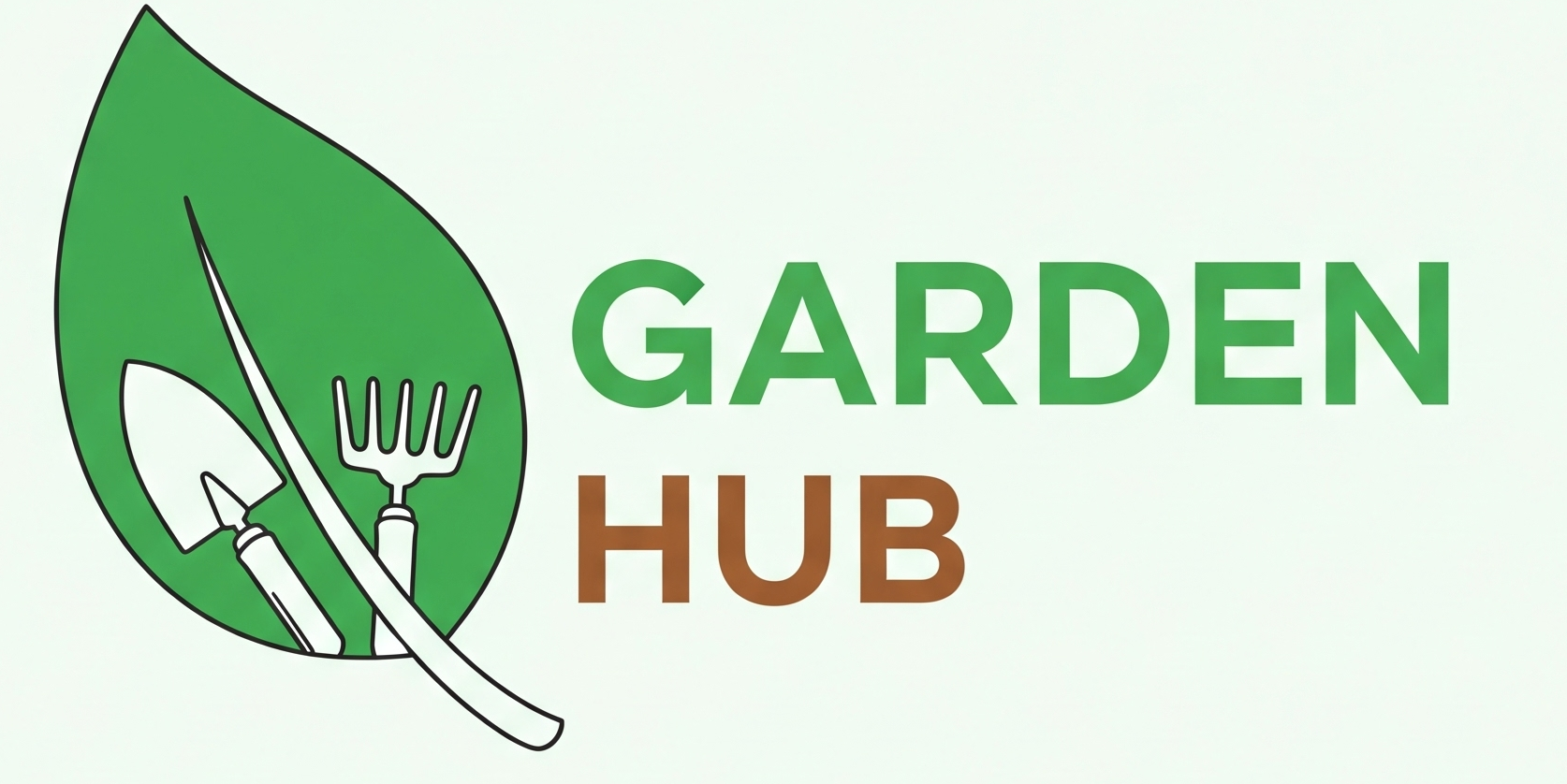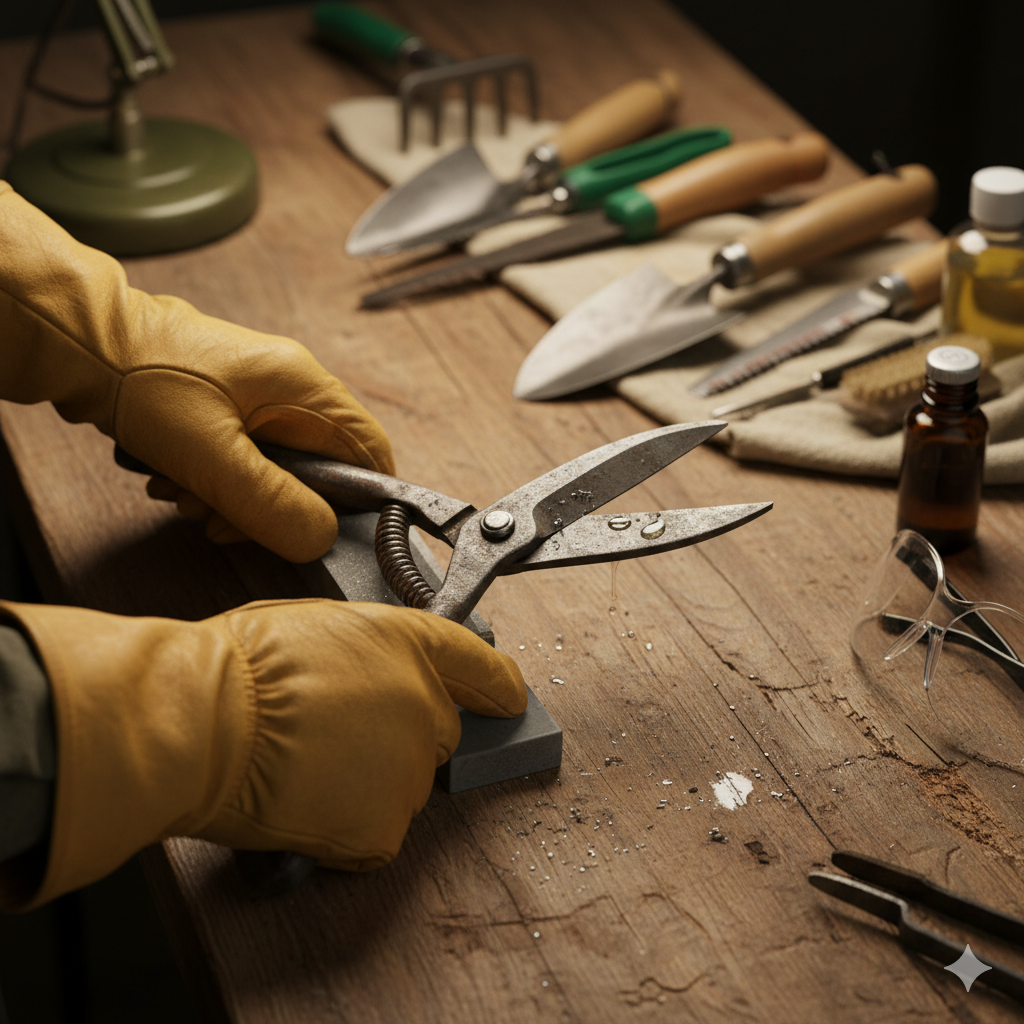Learning how to sharpen your gardening tools is a crucial skill for any gardener. It makes gardening easier, prolongs the life of your instruments, and enhances their functionality. The good news is that neither specialized knowledge nor costly equipment are needed to sharpen garden tools at home. You can maintain your garden tools in top shape with a few basic tools and easy methods.
We’ll walk you through sharpening your garden equipment at home in this post. We’ll discuss several techniques for different tools and break it down into simple steps. We can help you whether you have a lawnmower blade, hedge shears, or a hand trowel.
Why Sharpening Garden Tools is Important
Let’s talk about why you should sharpen your tools in the first place before we begin. These are some of the main advantages of maintaining the sharpness of your gardening tools:
- Improved Performance and Efficiency: Sharp tools make gardening tasks much easier. A sharp blade cuts cleanly and efficiently, reducing the effort required to do the job. Whether you’re pruning, cutting grass, or digging, a sharp tool allows you to work faster and with more precision.
- Cleaner Cuts and Healthier Plants: Sharp tools result in clean cuts. This is crucial when working with plants, as a clean cut helps minimize damage to the plant tissue and reduces the risk of infection. Clean cuts promote faster healing and better overall plant health. On the other hand, dull tools can cause tearing and bruising, which may lead to plant disease.
- Safer Gardening: It may seem counterintuitive, but dull tools can actually be more dangerous than sharp ones. When a tool is dull, it requires more force to cut or trim, and this added force can cause the tool to slip or become harder to control. Sharp tools, however, glide through the material with less effort, reducing the chances of an accident.
- Increased Longevity of Your Tools: Regularly sharpening your garden tools can help extend their life. When tools are properly maintained, they are less likely to wear out or rust prematurely. Sharp blades are also less likely to break or chip, which means you won’t have to replace your tools as often.
- Cost-Effective Tool Maintenance: Rather than buying new tools every time they get dull or rusty, sharpening your tools at home is a cost-effective way to maintain them. A sharpening stone or metal file is relatively inexpensive, and with a little practice, you can keep your tools in good condition for years.
So, what’s the best way to sharpen your garden tools? The process is simple and can be done with a few basic supplies, most of which you probably already have at home.
What You’ll Need to Get Started
To sharpen your garden tools at home, you’ll need a few essential items:
- A Sharpening Stone: This is one of the most common tools for sharpening. A sharpening stone is typically made from abrasive material and can come in various grits. Coarse stones are great for dull tools, while fine stones are used for finishing touches. You can also use a metal file as an alternative.
- A Wire Brush: A wire brush helps clean your tools before you sharpen them. It removes dirt, sap, and rust from the surface, which could interfere with the sharpening process.
- Lubricant or Oil: Using oil or sharpening fluid can reduce friction while sharpening and prevent damage to your tools. This also helps the sharpening stone work more smoothly.
- Protective Gloves: Since you’ll be working with sharp blades, wearing gloves can help protect your hands during the sharpening process.
With these tools in hand, you’ll be ready to start sharpening your garden tools at home. In the next sections, we’ll dive into the step-by-step process and offer some tips for sharpening specific tools like pruning shears, lawnmower blades, and more. Stay tuned!
Tools You’ll Need to Sharpen Your Garden Tools
To sharpen your garden tools, you don’t need many tools, but there are a few essentials you’ll need to get started. Here are some of the most common tools you will need:
- A Sharpening Stone: This is one of the most common tools for sharpening. Sharpening stones come in various sizes and grit levels. You can use a coarse grit stone for dull tools and a fine grit stone for tools that need only light sharpening. If you don’t have a sharpening stone, you can also use a medium or fine file.
- A Metal File: A metal file is a useful tool for sharpening garden tools, especially if they are made of steel. It’s a simple tool that works by rubbing it along the edge of the blade to wear away the metal and restore the sharpness.
- A Wire Brush: A wire brush is helpful for cleaning the surface of your tools before sharpening. Cleaning your tools helps prevent rust and dirt buildup, ensuring that the sharpening process goes smoothly.
- Oil: When sharpening your tools, applying a bit of oil to the surface of the sharpening stone or metal file can make the process easier and smoother. This helps reduce friction and prevents damage to your tools.
- Protective Gloves: Since you’ll be handling sharp objects, it’s always a good idea to wear gloves for safety.
- A Clamp or Vise: If you have a clamp or vise, it will be helpful for securing your tools while sharpening. It provides stability and keeps the tool in place, making the process easier and safer.
How to Sharpen Garden Tools (Step-by-Step)
Step 1: Clean Your Tools
Before sharpening, it’s important to clean your tools. Dirt, rust, or old sap can interfere with the sharpening process and prevent you from getting the best results. Use a wire brush to remove any dirt or rust from the blade of your tool. If needed, wash the tool with soap and water, then dry it thoroughly.
Step 2: Secure the Tool
Next, secure your tool in place. You can use a clamp or vise to hold it steady. This will make the sharpening process much easier and prevent accidents. If you don’t have a clamp or vise, simply hold the tool securely with one hand.
Step 3: Start Sharpening with a Coarse Sharpening Stone
Begin with a coarse sharpening stone or metal file to reshape the edge of the tool. Hold the stone at a 20-degree angle (this is the ideal angle for most garden tools) and run it along the edge of the blade in a circular motion. Apply light pressure, and be sure to sharpen both sides of the blade equally.
Step 4: Smooth the Edge with a Fine Sharpening Stone
Once you’ve reshaped the edge of the blade, switch to a finer sharpening stone or file. This will smooth out any rough spots and create a sharp, clean edge. Run the fine sharpening stone or file along the edge, following the same technique as before.
Step 5: Lubricate the Blade
After sharpening, you can apply a small amount of oil to the blade to reduce friction and protect the metal from rust. Use an oily rag or cloth to wipe down the tool.
Step 6: Check the Sharpness
Test the sharpness of the tool by gently running your finger along the edge (carefully!). If it feels sharp, you’re done. If it still feels dull, repeat the sharpening process until you’re satisfied with the result.
Common Garden Tools and How to Sharpen Them
Different garden tools require different methods of sharpening. Here’s how to sharpen the most common garden tools:
1. Pruning Shears
Pruning shears are a must-have tool for cutting back plants, but they can get dull with frequent use. To sharpen your pruning shears:
- Clean the blades with a wire brush.
- Secure the shears in a clamp or vice.
- Use a metal file or sharpening stone to sharpen the edge.
- Use light, smooth strokes to avoid damaging the blade.
- After sharpening, lubricate the blades with oil.
2. Lawnmower Blades
Lawnmower blades often get dull after a few uses. Here’s how to sharpen them:
- Remove the blade from the mower.
- Clean the blade with a wire brush to remove any grass or dirt.
- Clamp the blade securely.
- Use a metal file or sharpening stone to sharpen the edges.
- Sharpen evenly on both sides to maintain balance.
- Reinstall the blade once it’s sharp.
3. Hedge Trimmers
Hedge trimmers need to be sharp to make precise cuts. To sharpen them:
- Clean the trimmer blades with a wire brush.
- Secure the trimmers in place.
- Use a sharpening stone or file to smooth out the edges.
- After sharpening, apply oil to prevent rust.
4. Shovels and Spades
Shovels and spades often become dull from digging. To sharpen them:
- Clean the blade.
- Use a sharpening stone or file to sharpen the edge.
- Work in long, smooth strokes along the edge to create a sharp cutting edge.
Maintain Your Garden Tools for Long-Lasting Performance
Sharpening your garden tools at home is an easy and cost-effective way to keep them in good shape. By following the steps above, you can ensure your tools stay sharp, making your gardening tasks more efficient and enjoyable. Regular maintenance of your tools will also extend their lifespan and save you money in the long run.
Remember to clean your tools before sharpening, use the right tools for sharpening, and take your time to ensure the job is done properly. With a little practice, you’ll be sharpening your garden tools like a pro!
Frequently Asked Questions (FAQs)
1. How often should I sharpen my garden tools?
It depends on how often you use them, but generally, it’s a good idea to sharpen your tools at the start of the season and whenever they feel dull.
2. Can I sharpen my tools with a file instead of a sharpening stone?
Yes, a metal file works well for sharpening garden tools. It may take a little more effort than using a sharpening stone, but it’s a great alternative.
3. How do I know if my tool is sharp enough?
Test the sharpness by gently running your finger along the edge (carefully!). If it feels sharp, it’s ready to use. If it’s still dull, continue sharpening.
4. Is it safe to sharpen garden tools at home?
Yes, sharpening your tools at home is safe as long as you take the necessary precautions, like wearing gloves and working in a stable environment.
5. Can I use a power tool to sharpen my garden tools?
Yes, power tools like a grinder or bench sharpener can speed up the process, but they can also damage your tools if not used carefully.

